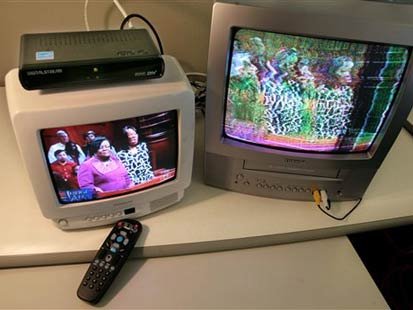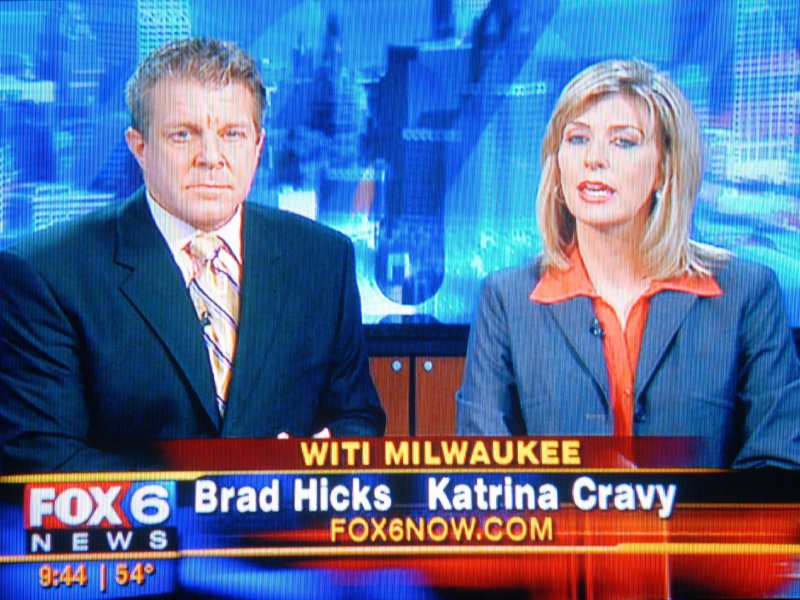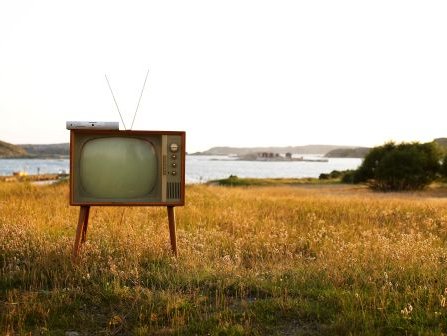In case you missed the endless news stories, commercials, on-air tests and informational "crawls" across the bottom of the screen over the past two years -- or were simply anesthetized by the onslaught -- today is the day that country switches to all-digital broadcast television.
That means that older TVs, the kind with "rabbit ear" antennas or things on the roof of homes, will not work.
This transition, originally scheduled for February, was pushed back because government officials didn't think the public was prepared for the flip.
For the past two years, all TVs imported in the U.S. or shipped in interstate commerce have been required to have digital tuners.
Owners of older TV sets will need digital converter boxes, which cost between $50 and $80 (the government offers $40 coupons), an antennae (perhaps two) to receive both VHP and UHF channels signals. Despite the warning, close to 3 percent of the affected households are unprepared.
The Federal Communications Commission's toll-free hotline (1-888-CALL-FCC) received a record 65,000 calls earlier this week. The number (1-888-225-5322) will remain active in the coming months.
The Web site DTV.gov can answer many questions about the transition. Here is a sampling:
Question: What Is the public benefit of the DTV Transition?
Answer: The switch to DTV will offer a host of important public benefits, to include: Freeing up parts of the broadcast spectrum for public safety communications (police/fire/rescue); Allowing some of the spectrum to be auctioned to companies that will be able to provide consumers with more advanced wireless services (such as wireless broadband); Allowing stations to offer improved picture and surround sound (enhanced audio); Expanding programming choices for viewers. For example, a broadcaster will be able to offer multiple digital programs simultaneously (multicasting); Providing interactive video and data services that are not possible with analog technology.
Question: What Is the Difference Between Analog and DTV Broadcasting?
Answer: DTV is an advanced broadcasting technology that replaces analog over-the-air broadcasting. Digital broadcasting allows stations to offer improved picture and sound quality along with a host of other advantages over analog broadcasting.
For example, rather than being limited to providing one analog program, a broadcaster is able to offer a super sharp High Definition (HD) digital program or multiple Standard Definition (SD) digital programs simultaneously. Digital television offers many advantages over analog television for viewing broadcast TV.
A broadcaster also can use its DTV signal to provide video and data services that are not possible with analog technology. Full-power television stations serving every market in the U.S. are delivering DTV programming.
Question: Can I still use my old analog TV set? How?
Answer: Your analog TV set will not be obsolete once the transition to DTV is completed, but there are some steps you must take to be able to continue to use it. To ensure continued use of your analog set, you must do one of the following:
- Use a digital-to-analog converter box.
- Connect to a subscription service such as cable or satellite TV.
In addition, analog sets should continue to work with gaming consoles, VCRs, DVD players and similar products that you use now.
Question: Does the DTV transition affect TV sets that are connected to cable services?
Answer: No. If you subscribe to cable service, the DTV transition should not affect any TV sets that are connected to your cable services. The DTV transition applies only to full-power broadcast television stations -- stations that use the public airwaves to transmit their programming to viewers through a broadcast antenna.
Question: How do I improve DTV signal strength?
Answer: Your DTV reception can be affected by terrain, trees, buildings, the weather, damaged equipment, as well as antenna type, location, and orientation. It can be improved just by changing the location of the antenna you're using now. Moving your antenna away from other objects and structures, or placing it higher, can often improve reception.
The performance of outdoor antennas can degrade over time due to exposure to the weather. Also, you may consider installing a signal booster, which should improve reception. If you are having trouble receiving a broadcast, you should check your connections, perform a channel scan or adjust your antenna.
Host of “The Drew Olson Show,” which airs 1-3 p.m. weekdays on The Big 902. Sidekick on “The Mike Heller Show,” airing weekdays on The Big 920 and a statewide network including stations in Madison, Appleton and Wausau. Co-author of Bill Schroeder’s “If These Walls Could Talk: Milwaukee Brewers” on Triumph Books. Co-host of “Big 12 Sports Saturday,” which airs Saturdays during football season on WISN-12. Former senior editor at OnMilwaukee.com. Former reporter at the Milwaukee Journal Sentinel.






